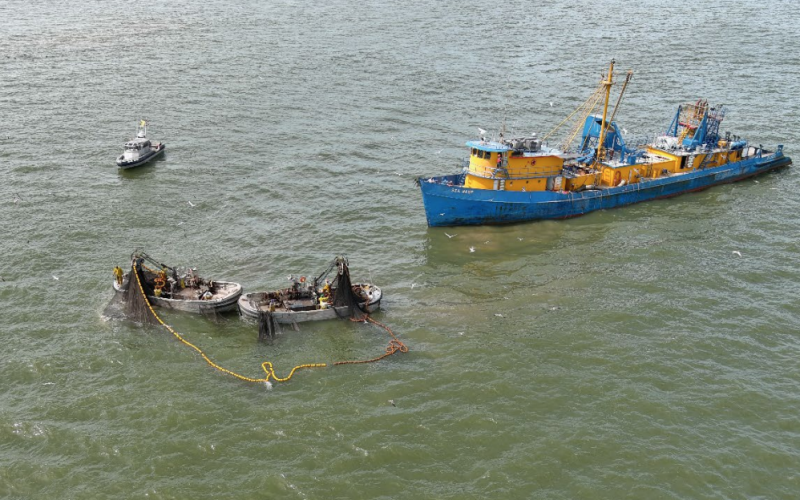Louisiana fisheries regulators voted Feb. 15 to potentially extend a current ¼-mile menhaden purse seine buffer zone to ½-mile coastwide, pulling back from a 1-mile setback requirement for menhaden fishermen.
In a unanimous vote the Louisiana Wildlife and Fisheries Commission amend its earlier October 2023 notice of intent, reducing the proposed 1-mile coastwide menhaden fishing buffer to a half-mile coastwide buffer.
The amended notice would still set a 1-mile buffer for menhaden crews working in waters off Holly Beach in Cameron Parish. Commercial and recreational fishing advocates alike expressed support for the decision, after hard-fought months of debate to convince state officials.
Omega Protein menhaden processors and their fishing partners, Ocean Harvesters, say they support the commission’s decision “and look forward to a productive and safe 2024 fishing season,” starting April 15.
“Although none of the stakeholder groups achieved exactly what they were advocating for, that often makes the best compromise – to achieve an agreement through mutual concessions,” said Ben Landry, vice president of public affairs for Ocean Harvesters.
“We applaud Gov. Jeff Landry, Secretary (of Wildlife and Fisheries) Madison Sheahan and Louisiana’s Wildlife and Fisheries Commission for their hard work to forge a middle ground on this issue, and to amend the original NOI.”
“We were asked by the Commission and Governor Landry to get in a room with the industry and work on a compromise, so that’s what we did. As with any compromise, there is some give and take,” said Charlie Caplinger, Louisiana chairman of the Coastal Conservation Association.
“That said, these new regulations on the industry are a very positive step forward for Louisiana’s coastal zone that will provide much-needed protections for our fragile shorelines and the fish and wildlife that live there. CCA and our coalition partners would like to thank Governor Landry, the Commission and the new leaders at Wildlife and Fisheries for helping to facilitate this agreement.”
Recreational advocates say the amended proposal will establish “more stringent penalties and reporting requirements for future fish spills.”
The 1-mile proposal arose as the commission initially decided to take action last October, after 18 separate fish spills with an estimated 2.5 million menhaden and reports of dead redfish aroused recreational fishing groups and fouled public beaches.
The commission held a public comment period followed by a Feb. 1 public hearing, where commissioners asked menhaden and recreational fishing and coastal conservation groups to work together on a compromise solution.
“Conserving and protecting Louisiana’s vast but diminishing coastal fisheries and critical barrier islands, beaches and marshes has been the goal of our coalition for the last five years,” said Chris Macaluso, director of the Center for Marine Fisheries for the Theodore Roosevelt Conservation Partnership.
“We have consistently worked with the Wildlife and Fisheries Commission, Department of Wildlife and Fisheries staff, concerned anglers, charter captains, conservationists, lawmakers at every level and the menhaden industry to enact meaningful regulations that can help accomplish that goal while recognizing the importance of commercial fisheries to Louisiana’s economy and culture.”
“For over three years, efforts have been made with little progress to get some common-sense regulations and policies put into place for the Gulf of Mexico reduction menhaden industry,” said Louisiana state Rep. Joe Orgeron, who in 2021 sponsored legislation to expand the buffers. “It now appears that these actions by the commission going forward will provide both increased scientific gathering on Louisiana’s largest fishery segment, as well as a better balance between the involved stakeholders for the upcoming 2024 season.”







